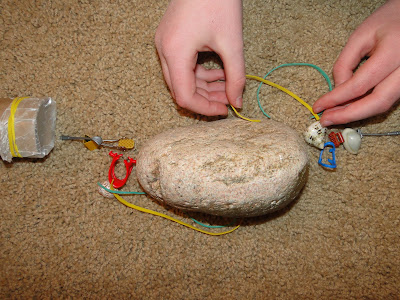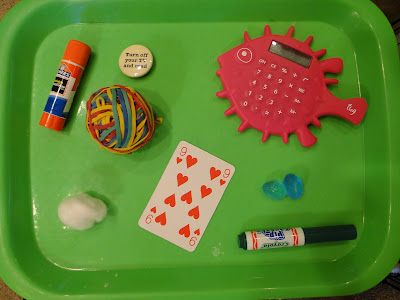A quick trip to the library yielded some research material:

Before we started reading, I asked the kids what came to mind when they thought of Japan: of course their first answers were earthquakes and tsunamis. But after some thinking, they named sushi, Hello Kitty, sumi-e painting and anime characters. The National Geographic book above has great maps, and we were able to locate Sendai, Tokyo, and the epicenter of the earthquake. (We also went to google maps to get an idea of where the shifting plates of the Ring of Fire are located.) We Live in Japan has good cultural information, and describes the daily activities of several Japanese children.
We also read about wildlife unique to Japan's remote islands, like the Bonin flying fox, and the iriomote cat.

I found it interesting that they celebrate the spring cherry blossoms much like we celebrate the fall foliage here.

We also watched a few interesting videos. I'm sure I don't need to show you any footage of the destruction and devastation, but we did look at appropriate news coverage, including ABC's explanation of what happened to the nuclear reactor. I didn't let the kids watch the horrifying personal stories--I think that would be too much for them--but we did see lots of scenes of damage and destruction. There are also some amazing before and after photos here.
Japan has such an amazing culture. One of my favorite videos is of a peaceful tea ceremony:
We had already planned a roll-your-own-sushi party with some friends a couple of weeks ago. Of course we had no idea at the time that Japan would be reeling from a series of disastrous events, so it was a bit more solemn than we had originally planned. We said a prayer for the Japanese people before we sat down to our Japanese meal:


To make a sushi roll, you get a sheet of nori...
 Spread the rice and other ingredients of your choice:
Spread the rice and other ingredients of your choice: I believe this one had asparagus, seared scallops, hot sauce and Japanese mayo.
I believe this one had asparagus, seared scallops, hot sauce and Japanese mayo. Then you slice the roll. Our homemade rolls aren't as pretty as the ones you get in restaurants, but they were still delicious.
Then you slice the roll. Our homemade rolls aren't as pretty as the ones you get in restaurants, but they were still delicious.
So, kids, tell me something you learned about Japan this week.
In the shinto religion, the land is sacred.
Japan has mountains, beaches, and forests. There are big, modern cities and also peaceful, natural places.
Japan has some unique wildlife, like snow monkeys and a rare cat.
Why does Japan have unusual wildlife?
For one thing, there are islands. So they were isolated.
What do the Japanese people like to eat?
Seafood, fish, vegetables, rice.
Why do the Japanese eat a lot of seafood?
Because it's an island. There are a lot of places to fish. Everywhere you go, there is a coast!
What is that word, that means a string of islands?
Archipelago.
Why do they use nuclear energy there?
They don't have coal mines and oil wells there.
Would you ever want to live in Japan?
Dude: I would. If it wasn't right now.
Super: I don't think I would because I'd always be worried about natural disasters.
Visiting Japan has been on my "someday" list for a long time, but I have to admit, I kind of agree with Super. I feel very fortunate that we don't live in an earthquake zone.
The tragedy in Japan is a reminder for us all that life is fragile and sacred, and that it comes with no guarantees. So never forget what is truly important, and enjoy your loved ones. We are praying for you, Japan.












